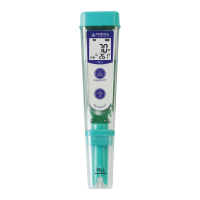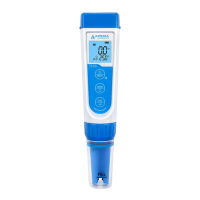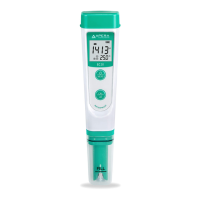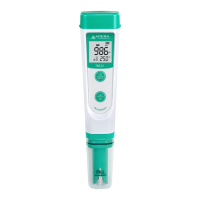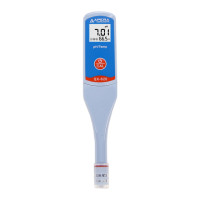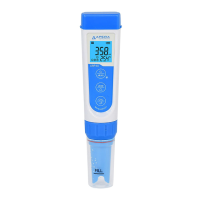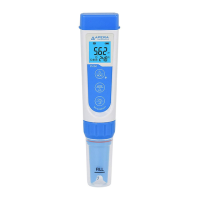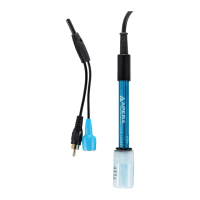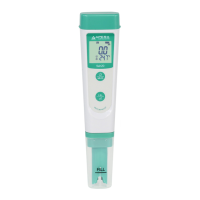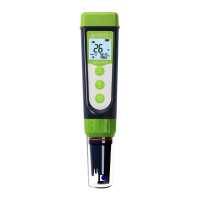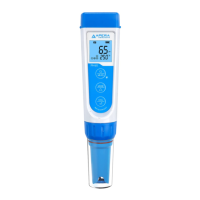pH M ea surem ent
Short press to turn on the tester. Rinse the probe in distilled water and dry it. Dip the probe in sample solution, stir
gently, and allow it to stand still in the solution. Get readings after comes up and stays on screen.
Notes
For solutions with low ionic strength (e.g. distilled or deionized water), the pH measurements will be fluctuating and
difficult to get a stable reading. A specialized pure water pH electrode is required. For more information, please contact
us at info@aperainst.com. Likewise, when testing clean water such as drinking water, RO water or tap water, the test
time could be longer, usually 2-4 minutes.
Applications of different models
1) PH60S-Z Spear pH testers are widely used for solids containing water or semi-solid medium. When performing such
tests, pay attention to insert probe evenly, and be careful to prevent probe from damage. If the medium is too hard
(such as meat or fruits), please bore a small hole with a knife before inserting the probe.
◼ For food pH measurement (e.g. sushi, cheese, meat, fruit, etc.), it should always be a sampling test. That
means test samples should no longer be edible.
2) For soil direct pH test with PH60S-Z
a) If soil is dry, add small amount of distilled or RO water to moisten the soil (do NOT add tap water since it will affect
the pH value significantly). Ideally wait 24 hours before you take a measurement.
b) Rinse the probe with distilled water/RO water before inserting it to the soil.
c) If measuring outside of solution, rockwool or small pots, remove the top 5cm/2inch soil from the surface of the
sample area. Insert the spear probe approximately 4 to 6 inches (10 to 15cm) into the soil samples from various
locations (3 to 4), wait for the stable readings before recording (smiley face icon stays on the screen).
d) Users can save all the data in ZenTest App. Then take the average of the saved data as the representative pH
level of the soil.
e) Do NOT use extra force to insert probe. If you feel like the probe can’t be inserted any deeper, stop inserting. The
spear tip could break.
f) Rinse off the soil residue between tests using distilled water or RO water for the best results. Use the probe
cleaning brush if needed.
3) PH60F Flat probe testers are mostly for flat surface sample test.
a) For skin test: skin should be without sweat or dirt, nor be overly cleaned (do not use facewash products before
testing) to avoid affecting measurement results, dampen skin with some distilled water, slightly force flat probe
onto the skin, get readings after value stabilized.
b) For paper, fabric and leather test: add a few drops of distilled/deionized water on surface before performing tests.
c) For micro sample testing, use a container with an inner diameter<=19mm and a flat bottom. The tester can test
volume >=0.5ml.
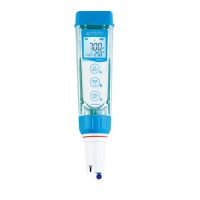
